We have Phil Dixon and Vince Poscente. Phil is the CEO and Founder of the Oxford Brain Institute. He does some amazing research and works with understanding motivations and different factors associated with the brain. He is one of the first employees at Apple. He’s worked with all the top companies. Vince is a Hall of Fame Speaker, New York Times bestselling author. He also deals with the subconscious and the conscious mind and some of the same factors that impact motivation. This show is fascinating for anybody interested in motivation and having fun. Vince should have been a comedian. No wonder he’s such a great speaker at the Hall of Fame. He’s made it for the US and for Canada.
Listen to the podcast here
What Motivates Our Brain with Phil Dixon
I am here with Phil Dixon who is the Co-Founder and CEO at the Oxford Brain Institute. Phil is focused on applying the latest knowledge from the field of integrative neuroscience in the areas of leadership development and organizational and cultural change. He has a diverse background. Everything seems to be around brain-related things. He’s worked with Apple. The list of brain-related companies is staggering. His book is titled Safety: Using Your Brain for A Change. Welcome to the show, Phil.
Thanks. It’s great to be here.
I’m fascinated by brain research in general and I do some of that research as well but not anywhere near the level of what you’re dealing with. What got you interested in the brain in the first place?
It started off in the in the field of information technology more years ago that I can’t remember. I did a sideways leap from running an information technology department into leadership development. I had always been used as the guinea pig and so I took over leadership development. I did that many years ago. As I was getting more and more involved in the field, I got more and more frustrated. It seemed like in spite of all the papers that were being produced, all the books that were being written and all the programs that were being run, we didn’t seem to be producing any better leaders. That’s an overstatement but in general, we weren’t moving the profession forward. What was underneath all these things that we were expecting leaders to do? I came up with a working title for myself I called the Leadership Genome. I kept looking and looking and I couldn’t find it. About several years ago, I was lucky enough to do a master’s degree at Oxford my school in Paris Jouy-en-Josas. In that master’s degree, we were exposed to the neuroscience of the brain. I realized that that’s what I’ve been looking for all these years. If we can understand what’s going on in the brain, at least the processes of the brain, etc. It doesn’t have to be the deep physiology. If we can understand the processes of the brain, then maybe we could help leaders become better leaders. That’s how I got involved.
I don’t know if you’ve worked in terms of as a consultant or whatever. It says you’ve worked for NASA, Coca-Cola, BP, Google, Apple and Twitter. In what capacity?
Mainly as a consultant. At various points in time, I was doing leadership development for these people. Over the last several years it’s all been the brain-based focus. Prior to that, it was leadership development in the same way that many other people are doing it. I chose to flip into the brain. The modern parlance is I pivoted into the brain.
[bctt tweet=”The best excuse in the world that you could think from now on is this – it’s not you; it’s your brain.” via=”no”]You have a peer-reviewed article in the NeuroLeadership Journal. I’ve seen a lot of the background of what you’ve done. I was watching some of your videos and you talk about Brainful Leadership. I was looking at the one where you were talking about the 1-2-4 Model and Brainful Leadership Assessment. Did you create an assessment? Can you tell me a little about that?
There’s a lot of movement in the organizations in our profession to what’s mindfulness. An ex-colleague of mine, Dr. Evian Gordon and I said, “How can you have mindfulness when we don’t understand what the mind is?” so we coined the term Brainfulness. That didn’t last long because what people heard was painfulness. That was not good, so we put that to one side. Dr. Gordon had invented the 1-2-4 Model, which is a simple model of understanding how the brain works. Is that there’s one organizing principle of the brain which is to survive and help you survive. It does so by looking for threats and rewards. If it’s threatened then she runs away, if it rewards it feels good. There are two ways it does that, it’s consciously and non-consciously. There are four processes that go on which is recognizing what’s happening around it, having supports, having some feelings and then deciding what to do is self-regulation. That’s the model in 30 seconds. If you look at what people are people threatened by and what are they rewarded by? We’ve created an assessment which helps people understand what is inside the categories of what it is that frightens them and what rewards them.
I created the Curiosity Code Index and the four factors that inhibit curiosity are fear, assumptions, technology and environment. Under fear, you’re talking about things that threaten people that totally goes along with what I’m interested in knowing is what are those things?
The main thing we’re looking for is to feel safe. We want to feel safe in a whole number of arenas. When I say we want to feel safe, we want to feel protected. That’s the first thing. You want to feel physically safe. We want to feel emotionally safe. We want to be treated fairly. We could expand upon that. It’s about twenty facets under that. I call it protection. We want to feel protected. We’re social animals. We want to be with other people. We want to participate but we want to participate under a certain set of conditions. We want to feel we are part of a group. We want to be with people that we like and are like us. We want to be part of a group, but we want to differentiate ourselves from the group as well. There’s a whole set of things there that we want and if those things are frightened then we react.
John Medina had a wonderful book called Brain Rules. He says, “The brain is a prediction machine. It predicts problems about survival,” and then he goes on to some other things as well. The third part of what we want is a prediction. We want to know what’s going to happen. We want some consistency. We want to be able to understand what’s going on around us. We want to be treated in a consistent fashion. We want our own thoughts to be consistent. All of that is around our need to protect. We got protection, participation and prediction. Once those are satisfied, then we can look for what I call purpose and pleasure, which is why we are on the planet, what are we trying to do with ourselves and our lives and then how do we gain pleasure out of it? Those are the five things and they break down into about 100 subcategories, but those are the five big categories.
Prediction plays into what I’m finding of what threatens people because they’re predicting that things are going to happen the way they happened in the past, in the way. If they were negative things that happened, that’s going to cause them to not want to be curious about something. They’re not going to ask questions, for example, in a meeting because they know there are going to be shut down. They don’t want to look embarrassed. They don’t want to have something that has happened to them in the past. Do you deal with those kinds of things when you work with these companies when you’re talking about the different Brain-based Leadership training?

Conscious And Subconscious: How can you have mindfulness when you don’t understand what the mind is in the first place.
We’ve got 39 different categories or I call them facets that have been identified that will likely to trigger you one way or another. Picking up on that I might not say something in a meeting because of the fear I have of being ridiculed, embarrassed. If I’m ridiculed, I’m embarrassed, I’m threatened, etc. I might feel less than and therefore my participation in the group is going to be threatened as well. Any one event that can occur can trigger your thoughts with multiple threats. We could take lots of examples. Not only do we want to sit back and protect ourselves, but we also want to show that we’re smart. We want to be right. We want to differentiate ourselves from the group. There are many aspects of it. Any one event can trigger a threat state in lots of different ways.
Those are the things that I research in. As I was writing my book, I started to think there are books about curiosity. There are books about finding your why. All the things out there drive. What I wanted to do in addition to discussing the importance of curiosity, to developing engagement and innovation and all the things that they’re trying to do in the workplace now is how do you overcome this. You’ve had this bad experience in the past. Somebody shut you down in a meeting. You fear rejection, humiliation, whatever it is you fear again. How do we get this to not happen again and get people feeling safe again? If leaders don’t buy in, how do we get the individual-level people to feel safe in that environment? Can it come from the bottom-up? Do we have to have the leaders buy into this?
I’d like to think that we can do it from the bottom-up, but I’m not sure my experience supports that. Leaders by virtue of the fact that they’re a leader tend to create a culture, a company and in some case, a country in their own image. If that culture is not safe, then many other things won’t occur. The culture has got to be created in some way that people start to feel safe. There was a magnificent piece of work done out of Google a few years ago where they found that the single most important component of successful teams was psychological safety. It was written up by Charles Dewey in the New York Times. In some ways, it encapsulates everything we’re trying to do. If we don’t feel psychologically safe, we’re not going to be curious to go down your track. We’re going to be threatened to go down my track.
How do we make them feel psychologically safe as leaders?
One of the ways is awareness. I believe the first step is making people aware. When I’m teaching some of my classes or doing some lectures, I’m going to give people the best excuse in the world from now on. It’s not you, it’s your brain.
My book was titled It’s Not You It’s Your Personality so you have to know I like that.
[bctt tweet=”Commitment is a process. You have to step in and consistently step forward.” via=”no”]What I found is a spinoff of that is that we are after people laugh. It gives them an excuse to look at the brain as though it’s a third party. They can become a little bit taxed on what’s going on and, “That’s a perfectly natural part of my brain. It’s not that I’m wrong. There’s nothing bad with me. It’s perfectly natural and this is what’s going on. It’s a whole bunch of neurochemical reactions.” It takes the emotion out of being threatened.
You can distance yourself, you’re saying. You can look at it.
That’s an even better way of putting it.
It all ties into emotions. I’m glad you brought that up since I’m interested in studying emotional intelligence. When I started to write my dissertation on it, I hadn’t known anything about it. I thought, “This is an interesting subject. I’m going to go this way.” All these years later it’s still huge. Do you think that we’re getting to be more emotionally intelligent as a workplace? Has all this training and all this information made a difference?
I would love to say yes but my fear is that we haven’t made a lot of difference yet. It’s becoming more accepted in the workplace to talk about emotions. I don’t think we’ve done a good job in describing what happens. The difference between emotional decisions, non-emotional decisions, rational, irrational, conscious, non-conscious, we need to look at all those buckets before we’ll have a significant impact. We need leaders to show the way. One of the things about creating psychological safety is for the leader to exhibit some vulnerability. Exhibit some transparency in what they’re doing especially more in the world. Bob Johansen calls it the VUCA World that we’re facing. VUCA World stands for volatility, uncertainty, chaos and ambiguity. He talks about in his books. He talks much more about what it’s going to be in the future when we have more of those four dynamics going on. If you look at the impact of those four dynamics and I suspect curiosity but also on the functioning of the brain. They will all join together to put the brain into a threat state, which the brain does not like any of those four.
Is it the same for all generations? When you talk about the brain, did you find any differences in the vulnerability or the younger generations’ ability to speak up or any of the issues that we’re talking about now? Have you seen any generational differences?

Conscious And Subconscious: If we don’t feel psychologically safe, then we’re not going to be curious to go down the track.
There are. I haven’t specifically studied what’s going on with any of the younger generations. If I was to project, my guess is that participation for the younger generation, for example, is probably a lot less face-to-face and with a physical presence. It is getting to know somebody online. I feel like I’m participating. I feel like I’m in a group with them, although I may never have physically met them. I suspect that might be a big change that’s happened in the last many years or so.
Did you work at Apple? You were at Apple University.
I worked at Apple for nine years from 1980 to 1989. I was in the IT department for several years. I transferred a few years into leadership development in Apple University.
I had John Couch on the show and who was one of the original Apple employees. It was interesting to me what they’re doing at Apple University. You’ve been involved in all these different university training types of programs. You had another brain-based University of the Brain that you co-founded.
It’s many of the same things. University of the Brain sounded like a good idea at the time. When I got contacted by other universities saying, “Are you going to offer a degree?” I said, “No, I’m not,” and then they said, “You can’t call yourself a university.” That’s where it evolved into several other names. That’s where it’s ended up at the Oxford Brain Institute because that’s where I live.
Do you do the same thing at the University of the Brain that you do now at Oxford Brain Institute or is it just in a different name? I’m thinking, “These are a lot of cool names for all these different things that you’ve done.” Now that you’ve found all this research on neuroscience and everything from peer-reviewed journals to teaching all the things that you’ve done. What’s the most interesting thing to you that you found about the brain in terms of leadership that’s maybe most surprising or wormhole you’d like to go down even further?
[bctt tweet=”Confidence has a direct line with the outcomes.” via=”no”]I’m not going down any wormholes until I’ve published my book in a few months. I’m staying above ground until that.
I would love to know about your book.
The working title of the book is called Using Your Brain For Change. It’s going to be in two parts. The first one is about the brain’s constant struggle inside itself and the second part is going to be what I call a field guide to using your brain. I’m most fascinated with what drives people from a non-conscious aspect. We’re also driven by our non-conscious. Lots of books have been written about that over the last few years. In general, we get eleven million bits of information land on our brain every second. Out of that eleven million, we process 40 in a conscious fashion. The other 10,999,960 are processed in a non-conscious fashion. That includes a lot of the ways we respond, a lot of our irrational behavior, a lot of our bias behavior. It’s going on at a non-conscious level. That’s probably the thing that most intrigues me at the moment. How we think we’ve got a lot of control about what’s going on but many of the things we do, many of the decisions are completely non-conscious.
If you responded on a conscious level, what would be the difference? Does it have to be at a conscious level? Is that a problem that we’re not responding in a conscious level?
In many cases, it’s not a problem because the brain has hardwired our responses, so we don’t have to think about it all the time. Somebody calculated if we had to think about everything all the time and make decisions on all of those eleven million bits of data, our brain would last about two hours before it exploded. I don’t know how he reached that conclusion, but a lot of it is the efficiency of the brain. We don’t have to logically and consciously think about everything. It’s necessary. For example, let’s say you run a wine shop and you’ve got an extra amount of French wine. If you play French music, you’ll sell more French wine, likewise with German wine and things like that. They’ve done research on giving tips in restaurants. If we left a little mint on the plate afterward, we non-consciously think that we should give something back. It increases the tip we give back. There are volumes and volumes of books being written on what we do non-consciously. We make non-conscious decisions on whether or not we thought about it. We would make the same decisions or slightly different. For example, all the work that Kahneman and Tversky did was how we often behave irrationally at a non-conscious level. One way it’s very good, it makes the brain efficient. On the other hand, it can lead us to make some decisions not necessarily in our own best interests.
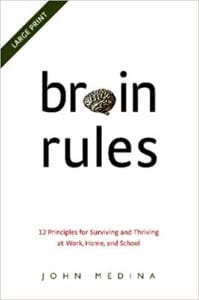
Brain Rules: 12 Principles for Surviving and Thriving at Work, Home, and School
If we want to get people to be more curious for example, we want to eliminate some of the fear, some of the issues in their environment. Maybe their boss, maybe situations have made them not open to other opportunities because they haven’t asked questions. They haven’t felt safe or they thought something was boring, they didn’t find interesting. Maybe it’s something they’d like. How do we open up that dialogue with leaders to make sure that they are getting the most out of their employees?
Awareness is the first step. We’re on to something; you down the curiosity track, me, down the brain track. We’d probably find there’s a huge degree of overlap between the two. I have found is that when I speak to leaders about the brain, even the most curmudgeonly engineering-oriented leaders are intrigued when we can put the science of the brain there and say, “This isn’t soft and fluffy stuff. This is as deep as science as we can get at the moment.” I find that they pay attention. It’d be a good thing if we did this and it now gets some resonance and some stickiness.
I’d like to see action plans and strategies built around this. Some of the times we see so much research that says, “This is bad. We shouldn’t be doing that,” or “This is good and we should be doing that.” People move on and then they don’t go to the next step. That’s what I’m trying to get to is that next step. Now that we know this is important, I agree with everything you’re saying. There’s a lot of research behind all of this that we’ve got to go beyond that. Just knowing something is important isn’t enough. It’s fascinating the work you’re doing with all this neuro-based leadership training. That’s what we have to do to get to the next level of innovation because you have to ask questions to be innovative. If you’re not asking questions because of fear or some other factor and within the workplace, there are going to be a lot of people displaced by artificial intelligence and everything else that’s changing jobs. Are you doing any work with artificial intelligence at all?
A little. It so happens that I’m actively involved with a company that is utilizing artificial intelligence for robotic process automation. I’ve been exposed to that in 2017 particularly.
I love the name of your book if you go with that name Using Your Brain for A Change. There are many people that could benefit from learning more about how our brains impact leadership. Your information is helpful and you’ve named some good books. I hope people take some time to look at some of those books as well. Do you have a website that people could find out more about what you’re doing?
I don’t have a website. It’s under reconstruction. My focus has been getting the book written and then gets the website done. I can happily give you my email address if anybody wants to contact me they’re welcome. It’s PhilDixon1@Mac.com.
I’m sure there are many people that would be interested. The companies with which you’ve worked, the list is a who’s who of who we’d want to work with. It’s fascinating to have you on the show. Thank you so much, Phil.
[bctt tweet=”The confluence of information coming at us with so much speed has created so much dysfunction in our world today.” via=”no”]It’s been great.
Aligning The Conscious And Subconscious with Vince Poscente
I am with Vince Poscente who is rated by Meeting Professionals as the Top Ten Motivational Speaker. He is a New York Times bestselling author who wrote the international phenomenon The Ant and the Elephant: Leadership For the Self. He’s an Olympian, could be a comedian and he has a lot of energy and personality. It’s nice to have you here, Vince.
Thank you. I appreciate it. It’s good to be with you.
You’re obviously an entertaining speaker. I want to know how you got to this level of success. Can you give a little background?
You mentioned that I was an Olympian. A bit of that story is I didn’t start ski racing until I was 26 years old and ended up being in the gold medal round at the Olympic Games a few years later. A few years after my 26th birthday to be in the Olympic Games involved a specific strategy. While I was racing, I thought, “I was ranked tenth in the world after a couple of years. I’ve put together a specific mental training program to work well. I could win this thing,” and then I didn’t. Here I was placed fifteenth in the Olympic Games. I lost. There was no demand for my speaking business but many months after the Olympics, their speaker canceled. On the last minute, they said, “Would you come and speak to our group of 90 networking people?” Four people independently came up after and said, “You’ve got to do this for a living.”
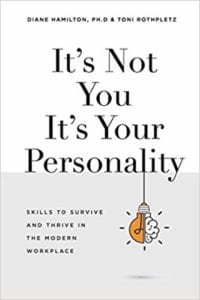
It’s Not You It’s Your Personality: Skills to Survive and Thrive in the Modern Workplace
If somebody said, “You got to see this movie,” you’d go, “Yes,” but if four people independently say, “You’ve got to see this movie,” you would go, “What is it about? What do I have to see?” I paid attention and then grew my business. It was very much a standing start. There was no momentum at the beginning because I was in the Olympics. There are a lot of gold medalists getting their phone ringing off the hook saying, “Would you speak to us?” but to be in demand to have that referral network where people say, “Would you speak to our group?” that came from improving as a speaker. Much the same way I did it as an athlete.
You did it because you’re only one of four people on the planet to be inducted into the USA and Canadian Speaker Hall of Fame. That’s saying something. You’re a New York Times bestselling author of seven books too. You’re a busy guy. What was the most difficult book for you to write off all of those?
Always the most recent one, they’re horrible. I’ve never given birth obviously. The gestation period in a book gets more and more difficult each time. I’m working on one right now. I won’t tell you the title but it’s a sequel to The Ant and the Elephant which is a parable about the conscious and subconscious mind. I’m working on that right now. They’re all like your kids. You get out there and you can’t pick a favorite.
I found what you were talking about the ant walking one direction and then the elephant walking the other. Can you share that a little bit because I liked the subconscious versus conscious discussion you had with that?
I went to a presentation by a guy named Dr. Lee Pulos. You know when you’re sitting there and then light bulbs go off? This guy said, “In a second of time, your conscious mind is processing with 2,000 neurons.” Right now, you’re listening to what I have to say. You lead by saying, “I’m very funny and I haven’t been funny,” and all sorts of things you’re thinking of consciously with 2,000 neurons every second. In the same second, the subconscious mind is processing with four billion neurons. The ratio between the conscious and subconscious mind when Pulo said is if you took a golf ball and put it on top of the Houston Astrodome. That would be the ratio of the conscious and subconscious mind. Mathematically, I took that down to what if you put an ant on the back of an elephant? There’s a more alliteration with that, it’s a stickier concept. I put that in my first book, that concept, about how we can have a conscious intention. You can consciously say, “I want to go on a diet,” but the subconscious mind might say, “No way, pal. Not without beer or pizza, I’m not.” It might have all these reasons why not that are unconscious.
Consciously, in the parable in the book, the ant says, “I want to go west,” but it’s on the back of the elephant. It doesn’t see the elephant. If you’re an ant on the back of the elephant, you’re not seeing an elephant. You see just a gray landscape. It’s the same deal with our subconscious mind. We can’t possibly comprehend the power, the immense direction and agenda of the subconscious mind. In the same breath, what if we had alignment between your conscious intention and your subconscious agenda? The book, The Ant and the Elephant, is about creating the alignment of where you want to go with your life first. Where is it that you want to go? Identify that with what I call the elephant buzz, that thought that creates a physical reaction and then being able to get your subconscious mind to step in line. There is a technique and that’s how I got to the Olympics in speed skiing. I end up skiing 135 miles an hour not because I wanted to, but I wanted to go to the Olympic Games. That emotional buzz, the elephant buzz of marching in the opening ceremonies. First you identify it, which I did and then I went, “How are we going to get there?” Aligning your ant and elephant is critical and then it gets easier. What if life got easier?
You said, “Where you want to go?” but a lot of where we want to go is impacted by our environment of what people have told us we should do or what we thought was boring, maybe we wouldn’t find boring. It’s impacted by our teachers when we’re in school or friends. How do you get over that to open up your mind to be more curious and successful?
[bctt tweet=”Without experience, we don’t have the confidence.” via=”no”]I split it into five C’s and let me go through this real quick because that will answer your question in the broadest sense. When you clarify where you want to go with that emotional buzz, you’re then going towards the second C which is commitment. Stepping towards something, you can be held back by all sorts of things that you are scared of, childhood wounds, limiting beliefs or all those subconscious things that exist. The commitment is less about a moment. Every Saturday, couples walk down the aisle and commit. That’s a moment in time. Commitment is a process. You have to step in and consistently step forward. Another way to put it, I call it the Mathematics of Opportunity. You go into a hallway where you are in your life and you see a door. Open the door and then look for another door. Open that door. Stay curious and that feeds into the process of commitment. The third C is consistency and then you’re in this process of consistency where you’re consistently executing. While I was racing, the philosophy was to do what the competition is not willing to do.
If you want to know what your competition is not willing to do, it’s typically those are the things you’re not willing to do either. To look in the self-honesty mirror and say, “What are the things that the top, the highest performers are not willing to do?” I say the highest performers because this is back to the Olympic story. In order to qualify for the Olympic team, you have to be ranked top sixteen in the world or higher, at least where I’m from in Canada or the United States for that matter. What are those top sixteen guys in the world not willing to do? It changes the dynamic of what you do consistently from the heroes in business, the heroes in sport. The heroes in leadership are the ones that are working harder and the first one in the office and the last one at night. These are the people that we look up to that are working hard. Work smarter. The Olympic motto is, “Citius, Altius, Fortius,” which is, “Swifter, Higher, Stronger.” How about adding a fourth one which is Smartius? Why not be smarter in how you approach this? That’s under the banner of consistency. Consistently executing, consistently innovating, consistently doing things the competition is not willing to do.
The fourth C is confidence. You can draw a direct line from confidence to outcomes. If somebody has high confidence, they’ll have peak performance or their performance will be higher and then you’re going to have better outcomes. What we consistently do is we always focus on, “I don’t have the results that I need. I need to change my performance. I need to do things differently.” That’s the case, but go further back and go, “What is my level of confidence?” If confidence is high and fear is low, you’re going to naturally have a better performance. Better on a sale or negotiation or speech you’re giving. For the leaders reading and the people you’re talking to and trying to get them going the same direction. If you have high confidence, you have better outcomes. That’s the fourth C.
The fifth C is control. Control is an odd word. Give me the long list of things you can control in your life. It doesn’t exist. You can control what you bring to the environment, meaning you can control what you bring to a meeting. You can control what you bring to a conversation with a teenager. You can control routines. The routines that I had when I was an athlete, I do the same thing prior to every keynote speech, that motivational talk I give, the exact same things. You get there early. I visualize the outcomes. I use something called the Vortex Technique where I get the highest and best energy and then I make the decision to have fun. I was preparing for our interview and I was going, “I want to talk about this,” and I was focusing on this. I went through these notes and then I went, “Wait, have fun.” Have you ever had a speaker you get the impression they’re saying, “Take my advice, I’m not using it.”
You brought up a couple of things that are important to my research. I was talking about how we have environment or assumptions. You also brought up fear. I came up with four factors that affect curiosity and fear, assumptions, technology and environment are the four that I found. Fear is such a huge thing. You talk about fear of opening the door or whatever. How do we get that high level of confidence? How do you overcome that fear?
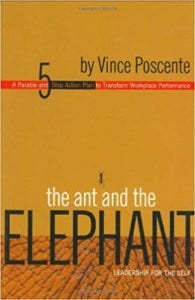
The Ant and the Elephant: Leadership For the Self
That’s huge and it’s only getting bigger. The reason we have so much dysfunction in our world now is a confluence of speed, the volume of things coming at us and at the same thing with that volume is being able to say, “What could happen? The fear attached to that.” Confidence is very much attached to experience, but we don’t have the experience with the new marketplace or a new landscape that we find ourselves in. Political, interpersonal, everything’s changed. Without that experience, how do you have confidence? If you don’t have confidence, you don’t have peak performance and you have the outcomes that you’re unhappy with. Here we are in an insidious direct line to outcomes that aren’t optimal. Go back to the clarity and find out where is it you want to hit? What is true north for you? We don’t know how we’re going to get there. If you’re clear on that emotional buzz of that outcome you’d like to have, is it the family together in a family reunion? Is it a situation in the marching of the opening ceremonies? Maybe I set a goal of having a New York Times bestselling book, I said, “How cool would that be? I don’t know how to get there.” To be able to create confidence, one tool that I wrote in the book, The Ant and the Elephant, is the ant has a conversation with the elephant.
Your conscious mind has a conversation with your subconscious mind only when it triggers with a negative thought. A negative thought is anything that takes you off course from the clarity, that outcome you’re headed towards. Let’s say a leader wants to be able to have a launch of a new product that is going to be in the media and everybody’s going to be talking about it. Everybody’s going to be excited and it’s going to be the new new thing. Let’s say a thought comes up and says, “We don’t have the budget for that.” The conscious mind says to the subconscious mind, “Thank you, but that’s not part of my vision. My vision is,” and then you go back to the exact scenario that you painted in the first place. How cool would it be? The launch, the media attention, the new new thing. You’ve interrupted the negative thought, the fear and then pivoted onto the emotional buzz. Every time you pivot onto an emotional buzz means that you have aligned 2,000 neurons and four billion neurons at the exact same time. The physical reaction from a thought is a litmus test for your ant and elephant headed in the same direction. The more you keep those four billion neurons aligned with your conscious intention, the easier things will be and the more things will manifest and appear. They show up. Somebody gives you a phone call and makes it happen. It works out that way.
How do you use that to become a New York Times bestselling author? How do you get there?
It’s very much a process. When I set out to be a New York Times bestselling author, it would have been my fourth book I was working on. I laid it out on the table and said, “This is the goal. This is the objective,” and I’ve brought people in who are way smarter than me which isn’t that tough. I have skied at 135 miles an hour. Let’s put that in perspective. I got the marketing team and they said, “You raced in the Olympics at 135 so speed is your thing.” We started with the speed concept and said, “If the speed’s the thing, what’s society dealing with right now? Society is in overwhelm. Why don’t I write a book called The Age of Speed?”
I brought in my publisher then I brought in a publicist who’d worked with John Maxwell and Marcus Buckingham and big authors like that. I worked over with a publisher who probably in the last few years had about fifteen New York Times bestselling books. I assembled this dream team and not because I knew that I should upfront. I said, “If we got the concept, we got The Age of Speed, we got the publicist, what’s next?” I know a guy and it’s like, “Boom.” Things in motion tend to stay in motion. Why don’t you be the architect for the direction of that motion? Most people aren’t.
Clearly define what the big puzzle piece looks like, smells like and tastes like. When I talk about a direction you’re headed, when I say clarity of vision, I wish I never said that in the book. It’s more than a vision. You’ve got to smell it and taste it. You got to bring in the five senses and then the emotion attached to that. That’s something I’ve come up within the last few years. I call experiencialization. Experience it. Experience the entire physiological. The smell, the taste, the touch and then the emotion attached to that. That makes it clear to the subconscious mind, the elephant, where it is you want to go. If you’ve got four billion neurons working in the same direction as your 2,000 neurons every second, who are you to say, “How do I do that New York Times bestselling book?” Get out of the way. Be in that state and that direction. Thank you, that’s not part of my vision. Pivot and then you go back onto what that outcome is. It’s less about what you do and more about the state you’re in and then people follow you. People follow people who have a passion for where they’re headed. Look at the political races. Look at the debates that are happening. The people who are most passionate about where they’re headed are the ones who are most appealing.
That’s an interesting aspect of what you were talking about. You have a lot of passion for what you do. Your prior background was a VP of Marketing International Investment Properties. You had this award-winning sales career. I’ve been in sales for many years and different aspects. How much is that foundational to your success to have a sales background do you think?
[bctt tweet=”The more you keep those four billion neurons aligned with your conscious intention, the easier things will be.” via=”no”]I’ve got three kids. They’re now 21, twenty and eighteen. From day one, my wife’s an entrepreneur. I’m an entrepreneur. We knew that they will succeed based on how well they communicate. There’s a saying, “If your lips are moving, chances are you’re selling something.” Connect the dots and say, “How well can you communicate? How confident can you be?” All three are extraordinary. The oldest is at Berklee College of Music. He’s dropping an album. We don’t finance any of what they do, by the way. It would be easy for us to write a check and say, “We got your back,” but my son, example, wanted to release an album. He has to hustle. He went to these top studios. One in Seattle, one in Dallas and one in Boston. Each of these places he was going to school at and he said to the studio owners, “I got this job at this hotel where I’ve got the midnight shift. At the end of this week, I’m going to make $400. If I give you $390 and I keep $10 for food, would you?” These studio owners knowing in the back of their mind they charge about $10,000 a day. They’ve got a 21-year-old so passionate and so specific on what he wants to create and then he’s making it happen. You do have to lead by example. We each knew. Do what you want. I know in my life that I have to lead by example. If I lead in a way that has people go, “That’s the way we’re going to make it happen.” Our middle child, she’s at Wharton School of Business. She went to an arts magnet school. She wasn’t your prototypical Wharton-type kid, but she gets after it. The reason she beat out 39,000 other kids is that she was deliberate on where she wanted to end up and had an emotional buzz attached to that. The youngest is a dancer.
That’s amazing that your kids do such interesting things. You do a lot of interesting things. I was in a rock-climbing competition and I found that you’re the Founder of the Heroes Climb Initiative, climbing and naming mountains after everyday heroes. You’ve participated in six Himalayan expeditions. You’re super athletic in all aspects.
Yes and no, but I’m more curious. If you looked at me, “You look like a chunky version of Anderson Cooper. You don’t exactly look like an athlete,” but I play beer league hockey. You’ve brought up all these things and I sound like an overachiever. I’m more curious. Everybody thinks about what I do. I don’t do it for the accolades. I put it on the bio so people can feel good about hiring me as a speaker. Make it about your audience. What are you going to do to create that emotional buzz? What are you going to do to commit and step up? What are you going to do consistently? How can we break it down and make it happen? Your podcast, your radio show, you have such an opportunity to reach out to people and truly transform people by the people you interview. That’s extraordinary, the privilege you and I have to get out there.
That’s probably a lot of my goal with this. You talk about emotional buzz. My dissertation was in emotional intelligence. I’m fascinated by how much emotions and all the things that we learned just being in sales like you were. We have a lot of similar background things. I’ve never been to the Olympics to that extent, but the sales background and some of the stuff that we have in common. We learned a lot about the lack of some of the emotional intelligence that was out there, at least I did. I was a pharmaceutical rep and saw a lot of doctors. It’s interesting to see all this training. Are you seeing people improving? What has been your experience? You’ve had some of the hugest clients. Your list is a who’s who of who you’d want to have to consult and speak to in the world. Are you seeing that we’re getting better at our emotional intelligence, our interpersonal skills and all the things that fall into the soft skills area? What are you seeing?
I see us getting worse on one level and it’s affecting everything. It’s this absolute determination to be right. The people are jumping up and down and sticking their feet in the ground and saying, “This is the way it has to be.” That is a lack of emotional intelligence. That is a lack of empathy. It’s creating a conversation. In one breadth I see things getting better. I don’t know if it’s just the kids I’m seeing around me. I speak to some youth groups at times. I am so optimistic about the future. I see so many aware people out there that the default to say, “What’s wrong with Millennials or what’s wrong with Generation Z?” This optimum comes from the awareness that people are going, “What if I’m not right? What if you have a point of view?” We had this little aside. When we’re doing this interview, the midterm elections in the US are coming up here in the next few weeks. We decided to watch one of the big debates between Ted Cruz and Beto O’Rourke.
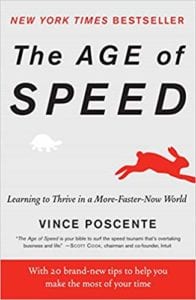
The Age of Speed: Learning to Thrive in a More-Faster-Now World
We had a drinking game attached to it. What we did was every time Cruz said, “Hillary Clinton,” we’d have to drink a beer. Every time Beto does say, “I’ve been to 254 counties in Texas,” you’d have to slug a beer. The reason I bring that up is we created an environment to have a conversation. We paused the TV and then we talked about something. We had Republicans and Democrats in the room and people and kids. Not from Canada, but what am I. I’m not either. I just moved here. I don’t have a predisposed political party that I have to be a part of. To create that dialogue, to put yourself in an environment where people are talking and being aware. Three of the people in the room were under 25. Part of their discussion was enlightening. To shift from being right to shift to having a conversation, just communicate is critical.
Creating a dialogue is important and that’s what I’m trying to do with my work. A lot of what you do is important. Your books have been unbelievable. I’m looking forward to the next one. I’m wondering if it’s going to entail that word that you created.
Experiencialization.
It was wonderful having you on the show. A lot of people are going to want to know how they can get your books or find out more to have you speak and all that. Vince, could you share that?
My website VincePoscente.com will get you there. You can go to AntAndElephant.com and you’ll be able to find me that way too.
One way or another, hopefully, they’ll find your work. It was nice having you on, Vince. Thank you so much for doing the show.
[bctt tweet=”If your lips are moving, chances are you’re selling something. ” via=”no”]You’re a true pro. Keep it up.
—
I’d like to thank Phil and Vince for being my guest. What great guests we get on this show. If you missed any past episodes, you can find them at DrDianeHamiltonRadio.com. You can also read them at DrDianeHamilton.com/Blog. If you want to know more about the Curiosity Code or Curiosity Code Index, it’s all at CuriosityCode.com. Hope you join us for the next episode of Take The Lead Radio.
Important Links:
- Phil Dixon
- 1-2-4 Model and Brainful Leadership Assessment – YouTube
- Brain Rules
- It’s Not You It’s Your Personality
- PhilDixon1@Mac.com
- Vince Poscente
- The Ant and the Elephant: Leadership for the Self
- The Age of Speed
- AntAndElephant.com
About Phil Dixon
Founder and CEO at Academy of Brain-based Leadership. Phil is focused on applying the latest knowledge from the field of integrative neuroscience into the areas of leadership development, and organizational & cultural change. The former director of IT worldwide and head of leadership development and management at Apple, Dixon specializes in the areas of leadership and management development, organizational change and development and executive coaching.
Phil is a leading expert in applying the latest knowledge from the field of integrative neuroscience into the areas of leadership development, organizational and cultural change, and coaching. During a 40 year career ranging from IT, Learning and Development and Neuroscience, en route Phil has worked in both the private and public sectors, has established 2 management consulting firms and has lived, worked and/or taught in 21 countries. Phil’s position is the application of the field of neuroscience to leadership; this has led to the publication of a paper in the NeuroLeadership Journal: Turn the 360 Around- A Brain-Based approach to giving feedback, and a chapter on Performance Management in the recently released book, Optimizing Talent.
He holds an MSc in Consulting and Coaching to Change, from Oxford Business School and HEC Paris, and a BSc in Computer Science from Warwick University. He is a frequent speaker on the topic of brain-based leadership and is in the process of writing a book “SAFETY: Using Your Brain for a Change.”
About Vince Poscente


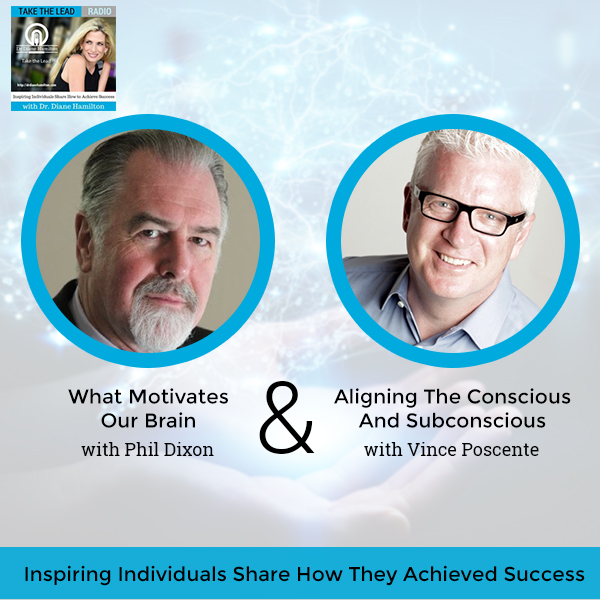
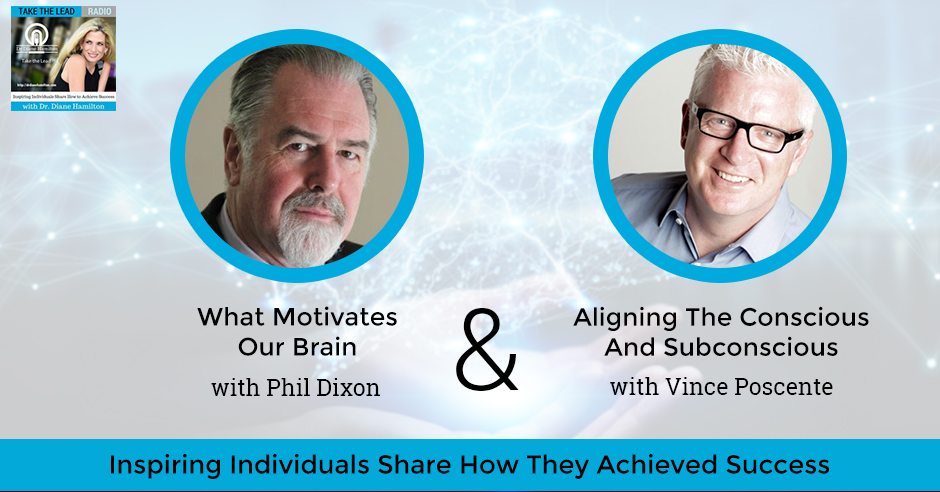
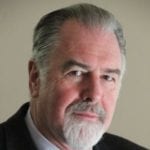

0 Comments